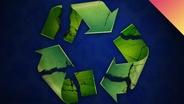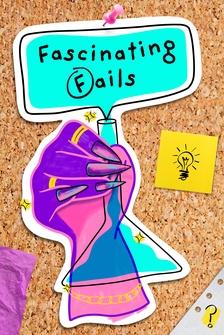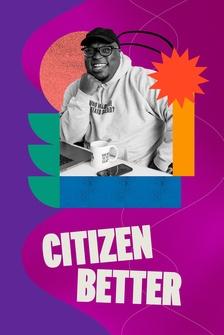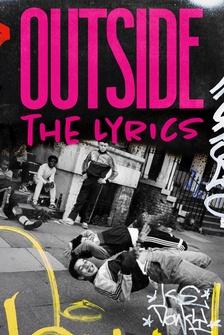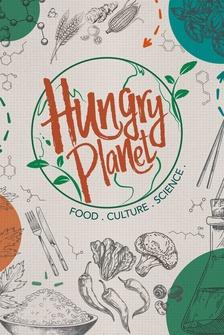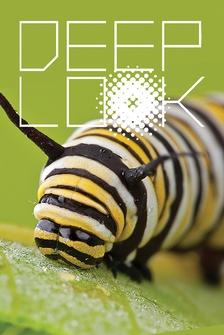MAN: We've all been there-- you've just finished a delicious snack, empty container in hand, and you have to make a decision.
Does this belong in the trash can or recycling bin?
Throw it away, and it's doomed to sit in a landfill for the next 500 or so years.
Or throw it in the recycling bin, and it happily makes its way to a local recycling plant where magic happens, and it's repurposed into more happy containers that will make other people happy one day.
You've saved the world from another piece of trash.
Cue the sunshine, the rainbows, and the smiling bunnies.
I mean, if everyone would just put more in the recycling bin instead of the trash can, the world would be a better place.
Except that's not exactly true.
By throwing this in the recycling bin, you've actually created more trash.
You've also made it harder to recycle the stuff that can be saved and basically demonstrated that recycling is broken-- at least the way that we do it today.
Luckily, we can fix it.
Hey, smart people, Joe here.
Why do we recycle?
Well, because it's one of the best ways for you to have a direct impact on the environment.
It means taking fewer raw materials out of the Earth, less energy and pollution to make new stuff, and most of all, less trash.
It may seem like recycling is a product of modern environmental movements, but people have been recycling for as long as they've been making stuff.
Before the Industrial Revolution, most goods and raw materials were pretty hard to come by, so people recycled as much as they could at home or at work-- everything from scrap metal to old clothes.
But unlike the olden days, we need recycling today because we make so much stuff.
The economic boom after World War II created a tidal wave of quick and cheap goods, and suddenly it made more economic sense to throw many old items away and just buy new ones.
Unfortunately, if the movie "Wall-e" taught us one thing, it's with a growing population and limited resources, we can't continue that cycle forever.
The good news is we're recycling a bigger fraction of our waste every year.
In 2017, Americans recycled 35% of our waste, and E.U.
countries recycled 46% of theirs.
Back in 1960, 94% of solid waste generated in the U.S. ended up in landfills.
But in 2017, it was just 52%.
And E.U.
countries do even better, only sending a quarter of their solid waste to landfills today.
But even though we're recycling more, we're making so much waste these days that Americans are still throwing away more total tons of waste than we used to.
So what can we do?
The reason so many people recycle today is thanks to single-stream recycling.
It's easy-- you put everything in one bin and just send it off for someone else to figure out.
In fact, around 2/3 of people say they wouldn't recycle at all if it wasn't so easy.
But in order for that to work, someone has to sort all this into this.
Then it goes from a sorting facility, it's put together with other stuff of that kind, and is sold by the ton in a global market, often shipped overseas to be reprocessed back into raw materials which are then sold to manufacturers who make new stuff out of it.
We're actually pretty good at recycling materials like aluminum or glass.
They can often be recycled back into the same stuff you started with, but many materials can really only be recycled into lower value products.
That's called down-cycling.
Paper and plastic are the real troublemakers here, because pretty quickly you just can't down cycle a material any further.
It's really convenient to be able to get rid of all this stuff in one environmentally-friendly colored bin, right?
But single-stream recycling has become so easy, if people aren't 100% sure if something can actually be recycled, they just throw it in the bin anyway.
It's called aspirational recycling or "wishcycling."
I'm definitely guilty of doing it, and I bet you are too.
And as a result, according to the National Waste and Recycling Association, about 25% of the stuff that we try to recycle is so contaminated, it just goes straight to the landfill.
That contamination comes in the form of things that can't be recycled, like plastic bags, which just clog up the machines that sort this stuff.
Yeah, you thought you were being nice and tidy by putting your recycling in a bag, but what you actually did was just get that whole bag thrown away.
Or diapers.
People are actually trying to recycle diapers-- used ones.
That's just wrong on so many levels.
But a lot of the contamination comes from things that technically can be recycled if they weren't so dirty, and our food container is a perfect example here.
Waste plastic like this gets ground up into tiny pieces and then sold by the ton.
But when I throw this in the recycling bin covered in food residue or with the foil lid still on it, it all gets ground up together.
That food and metal contamination can ruin the whole batch, because before this plastic can be repurposed into something new, it has to be a certain purity.
And in many cases, it's just so expensive to clean and purify it, the recycling companies can't make money on it, and it just ends up being thrown away.
Greasy pizza boxes, that's contaminated garbage.
Paper drink cups-- well, they've actually got a thin plastic or wax lining that most recyclers can't separate out.
So they get thrown away most of the time too-- which really makes you think.
[SUSPENSEFUL MUSIC] Where was I?
Oh yeah-- modern recycling became so widespread because countries like China were there to buy our reusable trash.
But trying to recycle contaminated paper and plastic was creating a whole new environmental problem in these countries.
And in 2018, China said, "Nope," and they banned their recyclers from buying our contaminated plastic and paper.
And other countries like Malaysia have since followed their lead.
China was the biggest buyer of the world's reusable trash, so this has completely messed up the economics of recycling across Europe and the U.S. Now more stuff is going from recycling centers straight into landfills.
And some cities have even stopped recycling altogether.
The very thing that makes single-stream recycling so successful-- how easy it is for us-- has become its Achilles heel, because we've made our recycling so dirty it just became more trash.
So how do we fix it?
The most important thing that we can do is only recycle what can actually be recycled.
Plastic is pretty confusing stuff, and not only because it used to be oil but now it's solid.
And somehow, you can carry milk in it-- I'll figure that out someday-- but also because there's more than one type of plastic.
Luckily, each type is labeled with a resin identification code.
It's a little number that helps you figure out what to do with it.
Numbers 1, 2, and 5 have a pretty good market in the U.S. for recycling-- water and soda bottles, milk jugs, laundry detergent, yogurt cups, stuff like that are mostly made out of these plastics.
But, they're only recyclable if they're clean.
Now, you don't need to wash it with the dishes, just rinse out any food or remove any labels and foil, and these are good to go.
Numbers 4, 6, and 7 are things like squeezable bottles, plastic bags, and many of the disposable plates and cups and takeout containers that you get.
These items are typically sent to a landfill and not recycled at all.
Number 3 is plastic like PVC pipes, and this is just not recycled.
I don't know why you'd have a bunch of pipes around unless you're a plumber, but just don't put any PVC in your recycling.
Glass and aluminum, well, give them a rinse and these are pretty much good to go.
But try not to break your glass if you can help it.
As for paper, used napkins or greasy cardboard like pizza boxes usually can't be recycled, but they can be composted if that's available where you live.
Paper cups in to-go containers with those plastic linings, more and more places are starting to recycle these using new technology.
But before you put them in the bin, check to see what the guidelines are where you live.
In fact, the best thing you can do in general is to learn what can be recycled where you live.
There's no perfect set of rules that I can give you because the rules are different everywhere.
So go to the website of your local recycler, or even call them on the phone if talking to actual humans is your thing, and find out.
You can also look for special recycling drop-off locations for odd items like batteries or Styrofoam.
And if you are ever in doubt if something can be recycled, don't put it in the recycling bin.
I know it feels weird, but sometimes you really are better off just throwing it away than contaminating a whole truck worth of recycling with six months' worth of plastic bags you've got stashed under the kitchen sink.
I know that's where you're hiding them.
Most of us have a constant stream of packaged goods coming into our lives designed to be used one time and then thrown away.
Perhaps the best thing that you can do is know what you can recycle before you buy stuff-- and, I don't know, don't buy stuff that you can't recycle.
The recycling symbol is one of the most recognizable logos ever created.
It was designed in 1970 to honor the very first Earth Day.
The three arrows in this environmental Mobius strip are now taken to represent three words-- reduce, reuse, and recycle.
Well today, we tend to focus mostly on the third one, recycle.
But since that first Earth Day, recycling was always intended to be just one part of this three-step process.
To truly get rid of waste, to keep our environment as clean as we can, recycling just isn't enough on its own.
We also want to reduce the amount of waste that we create in the first place by either buying items with less packaging or asking manufacturers to consider the waste when they design their packages and products.
And we should reuse whatever we can too.
Well, maybe not whatever we can.
Recycling alone just can't solve our waste problem.
I want to put something into perspective to prove that to you.
Since plastic was invented, 8.3 billion metric tons of new plastics have been produced, and 6.3 billion metric tons of plastic waste has been generated.
Only 9% of that has been recycled ever, while 79% of it has piled up in landfills or the environment.
According to researchers, 4 to 12 million metric tons of plastic waste entered oceans in 2010 alone.
And by 2050, there will be 12 billion metric tons of plastic in landfills.
That amount is 35,000 times as massive as the Empire State Building.
And there's no recycling system or technology imaginable that can get us out from under all that weight.
But we can choose to stop burying ourselves.
Stay curious.



